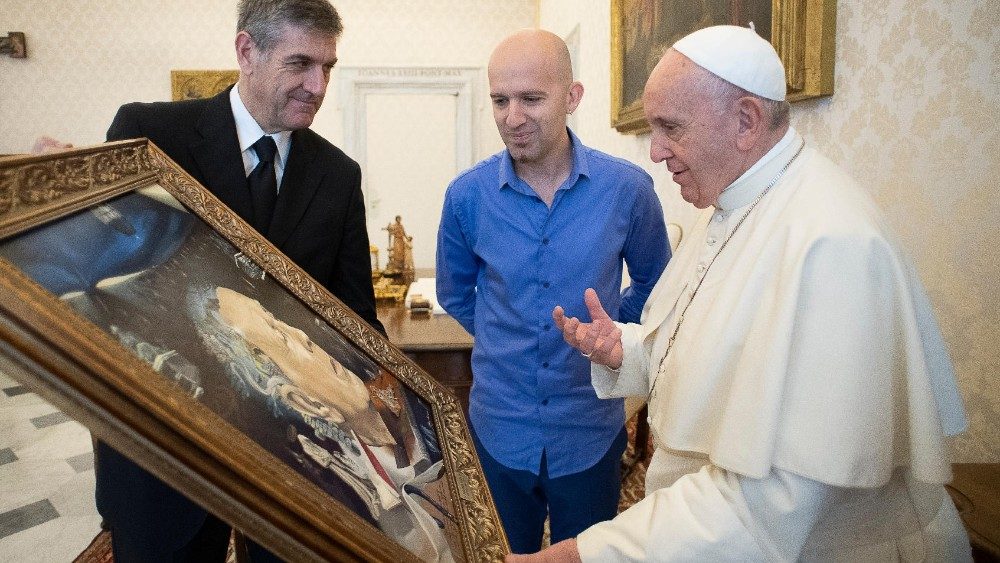Argentine artist Gustavo Maso gave his compatriot, Pope Francis, an oil canvas entitled “The Hidden Word,” in which he relates Jorge Luis Borges’ work “Unknown Street” with the Pontiff’s Apostolic Exhortation Amoris Laetitia.
The gift is a picture “that seeks to make one reflect on men’s behavior,” reported “Vatican News” in Spanish. The Argentine artist has been in touch with Jorge Mario Bergoglio through letters since 2011 and, since 2014 he has been capturing aspects of Francis’ Pontificate.
The Inspiration Is Love in the Family
“The two houses that Jesus describes, built on rock and on sand (Cf. Matthew 7:24-27), are a symbolic expression of so many family situations, created by the liberties of its members because, as the poet wrote, ‘every house is a candelabrum.’” This passage of numeral 8 of the First Chapter of the Post-Synodal Exhortation Amoris Laetitia (AL), on love in the family, is the point of inspiration of the work “The Hidden Word” of Argentine artist Gustavo Maso, who recently offered it to Pope Francis.
“The Hidden Word” was made in reference to the 120th anniversary of <Borges’> birth, which was last August 24, said Maso. This work on Borges does not treat of Borges the writer but “portrays Borges the man,” he added. “From the quotation that the Pope does of Borges in Amoris Laetitia, I have tried to represent Borges the person in his building on rock; shown through the work is the person, the person artist,” he explained.
A “Doctorate in Closeness”
The purpose of the work is to keep alive the memory of the great Argentine writer. In a 50 x 65 cm painting, using the technique of oil on canvas, artist Maso gives continuity in capturing artistically aspect of Francis’ Pontificate.
Maso recalled that on presenting the work to the Holy Father, he said a very interesting thing <to him>: “I consider Your Holiness as a great synthesizer of ideas; <the Pope> said to me that in some way he was doing a sort of ‘doctorate in closeness,’ given that art is a means of communication,” said Maso. They have kept up their communication over these years; it is “above all an artistic communication,” he clarified.
Work on the Pope’s Sister
In addition, the Argentine artist gave the Holy Father a reproduction of his sister Maria Elena’s hand. Maso said that they had “not seen one another since he was elected Pope and that in some way this achieved a certain closeness, a certain symbolic reunion.”
The piece was accompanied by a very brief audio of his sister. “The Pope remained silent for a moment and introspective, listening to the audio and touching the reproduction with his eyes closed.” From the artist’s point of view, he was able to perceive a certain communication between them beyond the tangible. In fact, this art piece is called “The Tangible Desire.”



